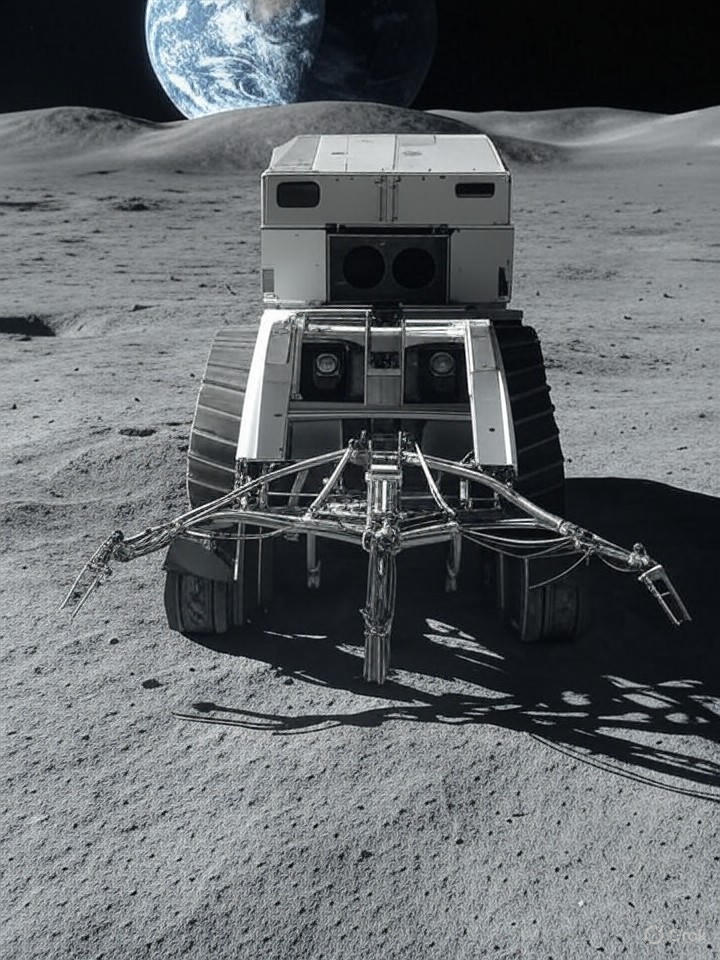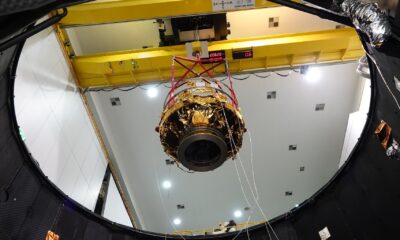Science
Interlune Aims for Lunar Helium-3 Mining by 2028

Pioneering mining company Interlune has announced its plans to extract helium-3 from the lunar surface by 2028. This rare isotope, crucial for nuclear fusion, has the potential to transform sectors such as clean energy and quantum computing. Helium-3 is not readily available on Earth, making its availability on the Moon a significant opportunity for technological advancement and economic growth.
Interlune claims to have identified substantial helium-3 deposits through advanced surveying techniques. The company aims to conduct what could be the first commercial harvest of lunar resources. Helium-3, abundant in the Moon’s regolith due to billions of years of exposure to solar wind, is valued at up to $20 million per kilogram, driven by its potential applications in high-tech industries.
Geopolitical Implications of Lunar Resource Extraction
This announcement comes as competition intensifies between global superpowers, particularly the United States and China. According to a report from Space.com, Interlune’s ambitions align with broader efforts to secure helium-3 for use in quantum computing, where it serves as an essential coolant for achieving ultra-low temperatures. The startup has already secured agreements to supply up to 10,000 liters of extracted helium-3, suggesting early confidence in the market.
Practical steps towards this goal include the development of a prototype harvester capable of processing 110 tons of lunar soil per hour. This innovation, highlighted by The Washington Post, addresses the logistical challenges of lunar mining, including extreme temperatures and the lack of atmosphere, while aiming to minimize environmental disruption on the Moon.
Technological and Economic Challenges Ahead
Beyond energy applications, helium-3 is also instrumental in fields such as medical imaging and supercomputing. Forbes notes that Interlune is working on robotic systems for autonomous mining, potentially operational by 2028. This timeline coincides with NASA’s Artemis program and China’s Chang’e missions, which are expected to enhance the necessary infrastructure for transport and processing.
Despite the enthusiasm, challenges remain. The high costs of space travel and the unproven economics of transporting materials back to Earth are significant hurdles. Advocates argue that leveraging in-situ resource utilization—using lunar materials for local construction and fuel—could mitigate these expenses. As Interesting Engineering reports, global powers view helium-3 as “moon gold,” with Russia also showing interest in lunar resource extraction.
Financially, Interlune is attracting investors and has raised funds to deploy multispectral cameras for precise mapping of resources, as detailed in Autoevolution. A partnership with quantum cryogenics firm Bluefors marks one of the largest contracts in the space resource sector, underscoring the isotope’s importance in advancing computational power.
The ethical dimensions of space mining also warrant attention. Critics raise concerns about equitable access to lunar resources under the Outer Space Treaty. While some warn of a new colonial rush, supporters, including those cited in ESA publications, emphasize the potential for shared technological benefits, such as safer fusion energy that could help combat climate change.
Looking forward, successful helium-3 mining could catalyze a broader space economy that includes the extraction of water ice, rare earth elements, and oxygen from lunar soil. Insights from 21st Century Tech Blog suggest this could support permanent lunar settlements, reducing reliance on Earth for essential resources. For industry insiders, the viability of Interlune’s prototypes will be a critical factor. If they prove successful, the venture could attract billions in investments, fundamentally changing the landscape of space exploration from a scientific endeavor into a lucrative commercial domain.
This lunar initiative represents a significant shift, transforming the Moon into a potential hub for innovation and commerce. As extraction technologies advance, the dream of harnessing cosmic resources could soon become a reality, with profound implications for Earth’s technological future.
-

 Technology4 months ago
Technology4 months agoDiscover the Top 10 Calorie Counting Apps of 2025
-

 Health2 months ago
Health2 months agoBella Hadid Shares Health Update After Treatment for Lyme Disease
-

 Health3 months ago
Health3 months agoErin Bates Shares Recovery Update Following Sepsis Complications
-

 Technology3 weeks ago
Technology3 weeks agoDiscover 2025’s Top GPUs for Exceptional 4K Gaming Performance
-

 Technology2 months ago
Technology2 months agoElectric Moto Influencer Surronster Arrested in Tijuana
-

 Technology4 months ago
Technology4 months agoDiscover How to Reverse Image Search Using ChatGPT Effortlessly
-

 Technology4 months ago
Technology4 months agoMeta Initiates $60B AI Data Center Expansion, Starting in Ohio
-

 Technology4 months ago
Technology4 months agoRecovering a Suspended TikTok Account: A Step-by-Step Guide
-

 Health4 months ago
Health4 months agoTested: Rab Firewall Mountain Jacket Survives Harsh Conditions
-

 Lifestyle4 months ago
Lifestyle4 months agoBelton Family Reunites After Daughter Survives Hill Country Floods
-

 Technology3 months ago
Technology3 months agoUncovering the Top Five Most Challenging Motorcycles to Ride
-

 Technology4 weeks ago
Technology4 weeks agoDiscover the Best Wireless Earbuds for Every Lifestyle





















